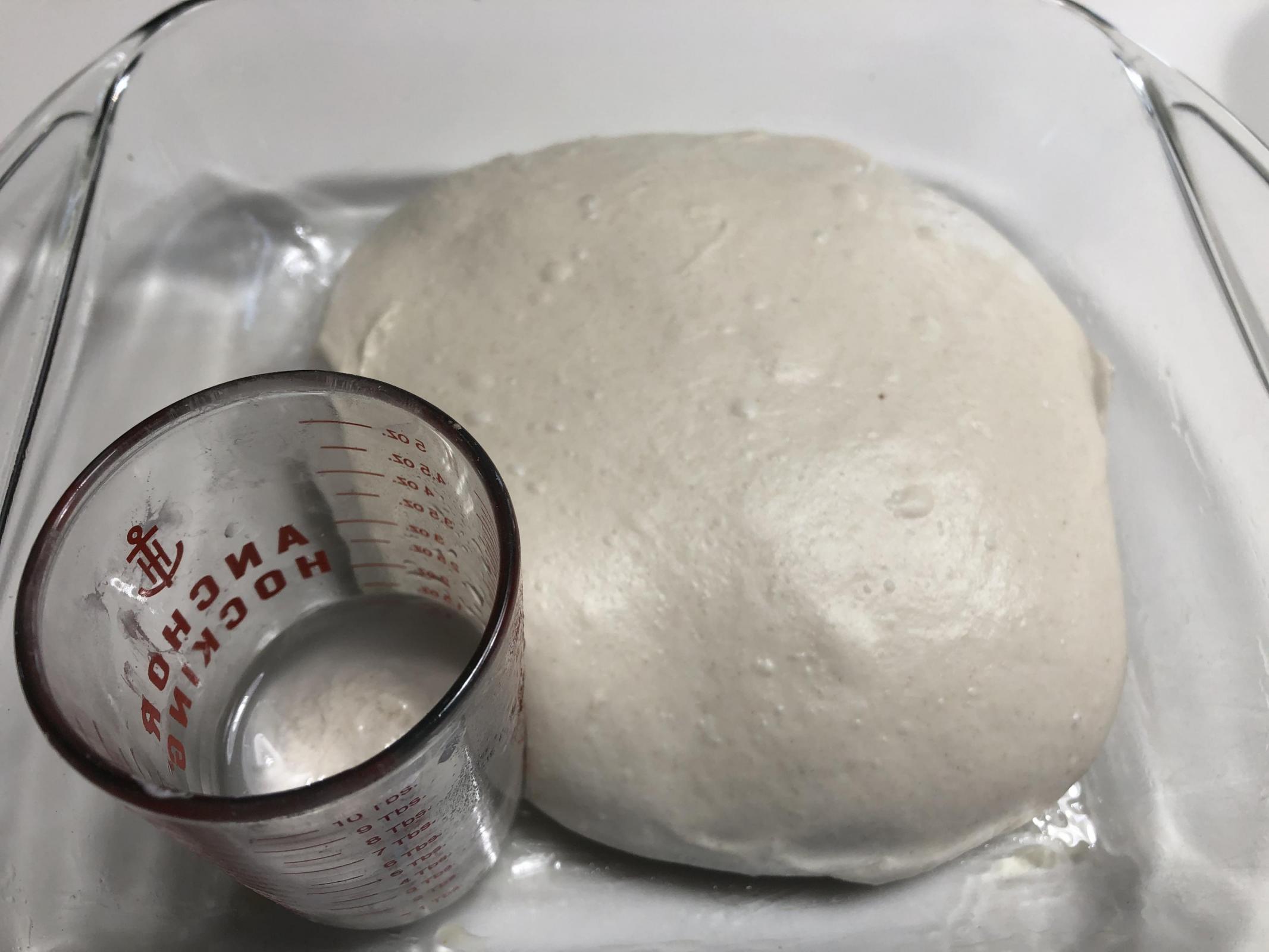
Community Bake - Ciabatta
Below is a compilation of Ciabattas that were baked in the Ciabatta Community Bake
Bakes 1 & 2 used Hamelman’s Poolish formula listed in the original post. I haven’t baked Ciabatta in a long time and the results bare this out. The breads had a super thin crust and a super soft interior. That suited me to the max. The taste was ok, but I would have liked a much more complex flavor. 
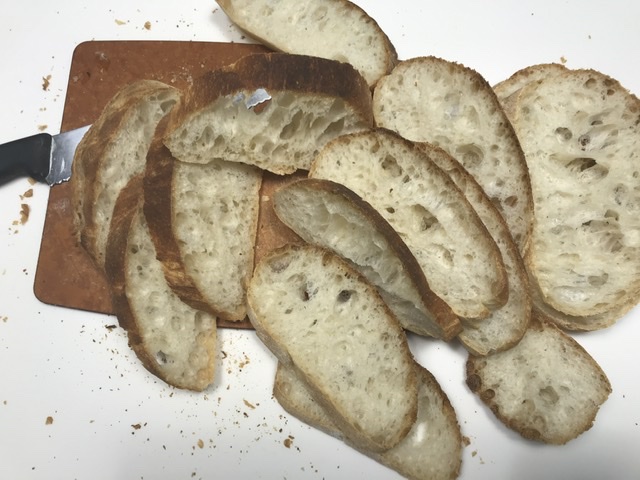
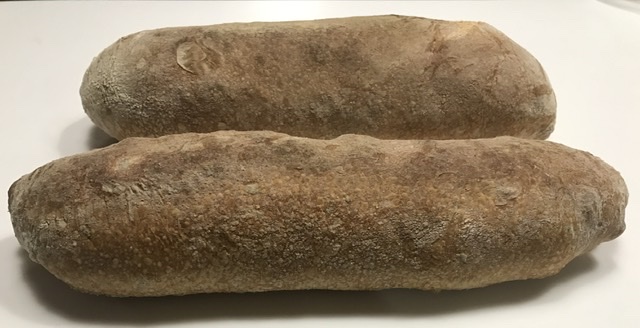
The black specks in the image below are black olives. 5% was used but the increase in flavor was disappointing. Chopped green olives, maybe as much as 10%, might have been a better choice. 5% olive oil was added to the second bake. It softened the crumb and enhanced the bread, IMO.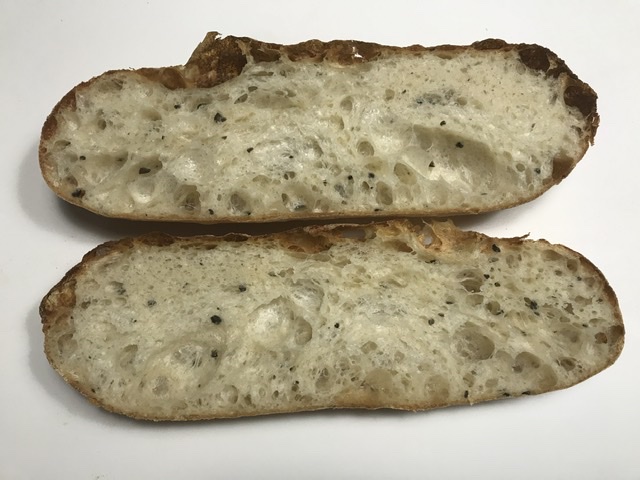
Bake 3 - After the previous two bakes I started exploring the possibilities of using much less CY with an increase in flavor in mind. This lead me to John Kirkwood’s formula that used a small amount of CY in the Poolish only and none in the Final Dough. His Poolish ferment temp & timing didn’t work at all for me. After following his directions to refrigerate the Poolish for 12-14 hours it had not risen at all, so it was left on the counter to mature before mixing into the Final Dough. The bread produced the typical Ciabatta crumb and the flavor had more character, but improvements were needed. To tell you the truth! I like Allan’s crumb better than the typical holey version. See Alan’s crumb shot below.
Bake 3 Images 

Bake 4 - As a former fan of Ciabatta with Poolish, my recent studies revealed that the original Ciabatta used a Biga. It is my understanding that the Poolish is French and the Biga is Italian. With this new knowledge the Biga version became the focus...
A response by Debra on a recent and timely post concerning “ How to make a starter maximized for yeast” taught me that white flour, low hydration, frequent builds, and moderate temps would move my starter in that direction. And so it was, 50% hydration, all white flour, temps in the low 70’s (F), and 3 feeds a day for several days. Not a Lievito Madre, but inching closer. I’ll be leaning on Michael as LM evolution evolves :-)
Michael tells me that a Biga can be either SD or CY, but must be low hydration. SD was chosen because flavor was the main focus. I had a mature SD Biga and hadn’t found the perfect formula, so Abel’s 90% Biga was adopted and tweaked. The SD Biga used 76% Pre-fermented flour, 75% hydration, and 2.2% salt. The flavor was much more complex and ramped up noticeably (slightest hint of acetic), crust was nice, but not as thin as CY, and the crumb required a little more chew but not much more. IMO, it was a definite hit and will be further refined in the near future.
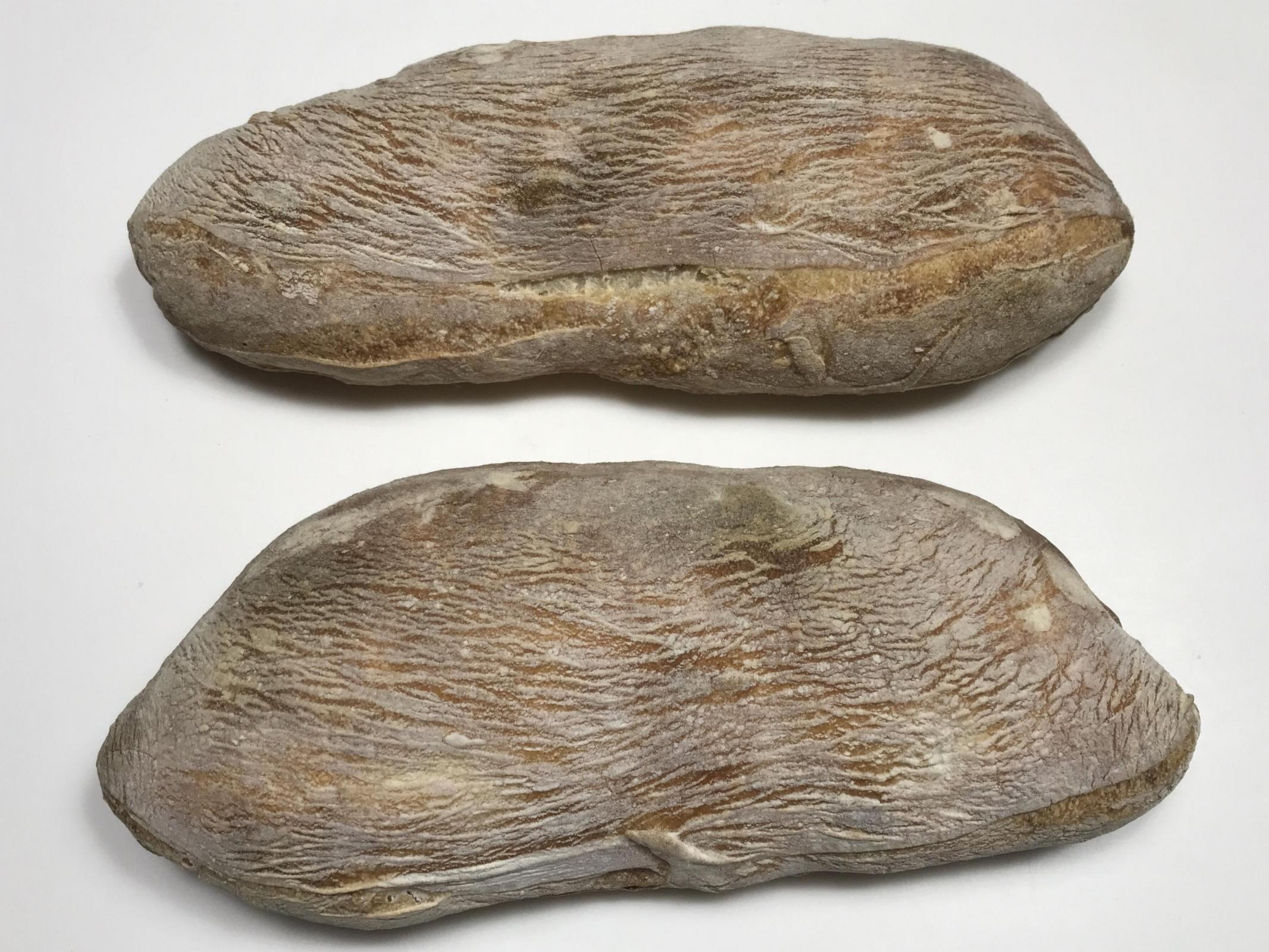
It is interesting to note that of the 4 bakes this one was the only one that got the “finger polk” treatment. All others rec’d no deflation at all.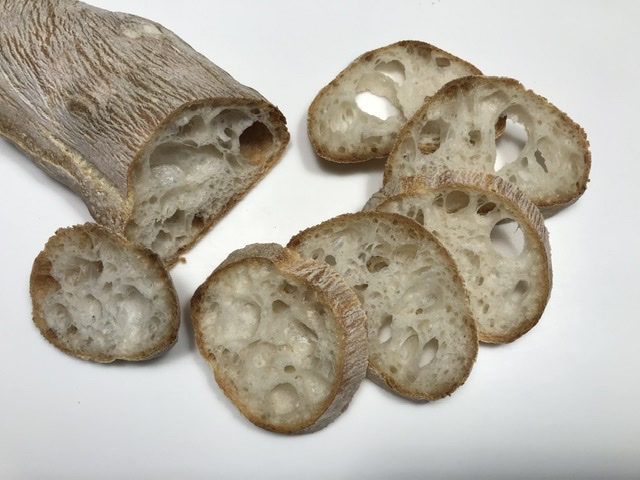
Here is the spreadsheet for Bake #4 - Note, the original Giorilli (CY version) was tweaked. See video link for original version.
Dan’s Bake 5 - A couple of days ago I decide to re-make Bake #4 (Georilli - 50% sd biga version). The first one was a smashing success and I had to be sure that this could be replicated. To my surprise this turned out completely horrible. I knew when the final mix was taking place that the gluten was wrecked. But, great news! After mulling this failure over in my brain for ~48 hr the light came on. The flop became a precious treasure because I learned something new. The reason the biga is mixed in such a way as to NOT form gluten, is because IF the gluten is formed up front the dough is highly susceptible to degradation. Not sure how/why the first attempt turned out so well, but I know now why the second bake failed to the max. Note - the second attempt used 9% more PFF. Check out these images.
The image below was taken after the dough was removed the mixer. While mixing it was evident that the gluten was shot. Additional flour was added, intense kneading applied, nothing could resurrect the pockmarked dough.
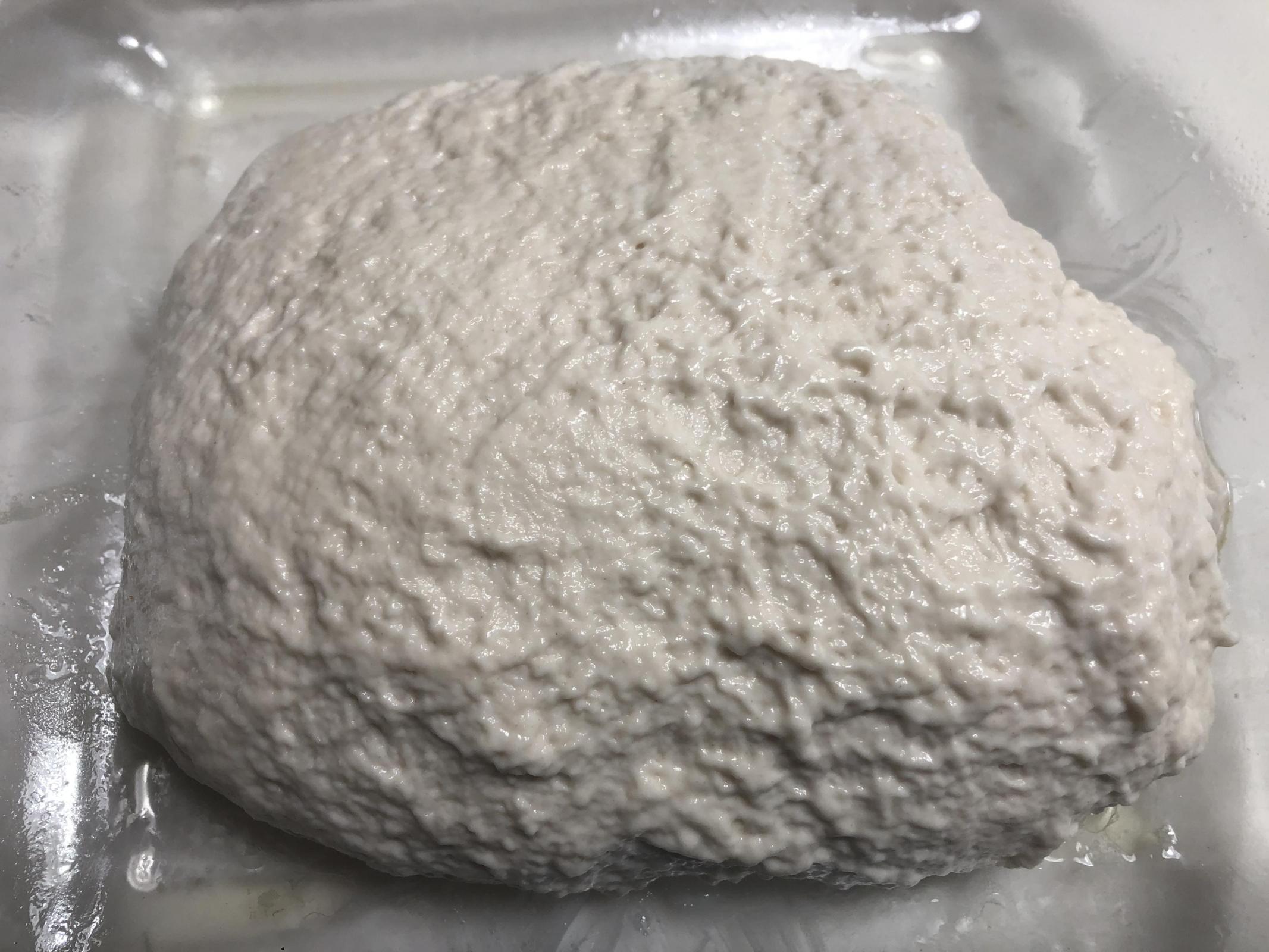
Image below shows dough at shaping, what a complete mess!
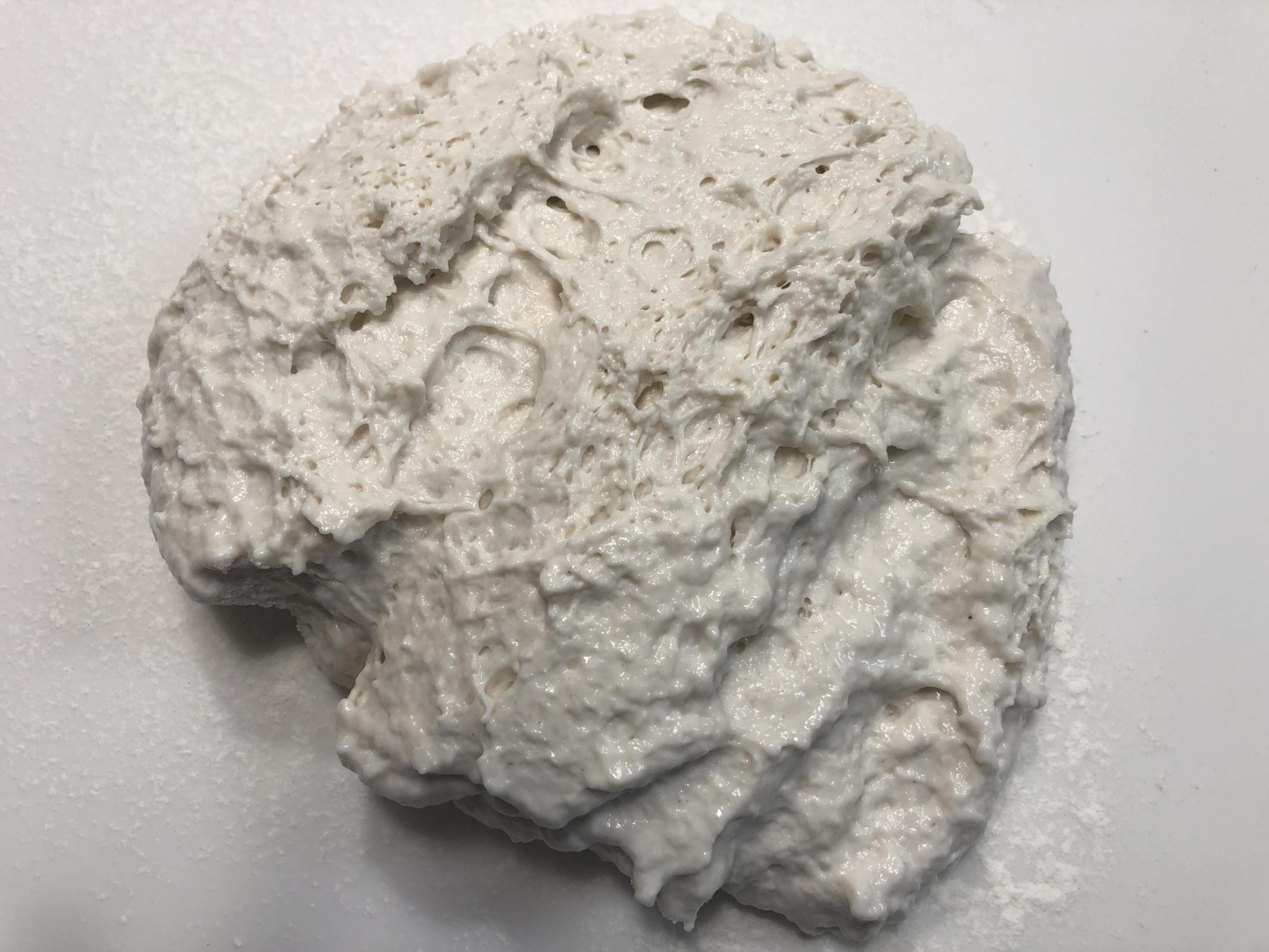
It was obvious before this dough hit the oven that it was unable to rise.
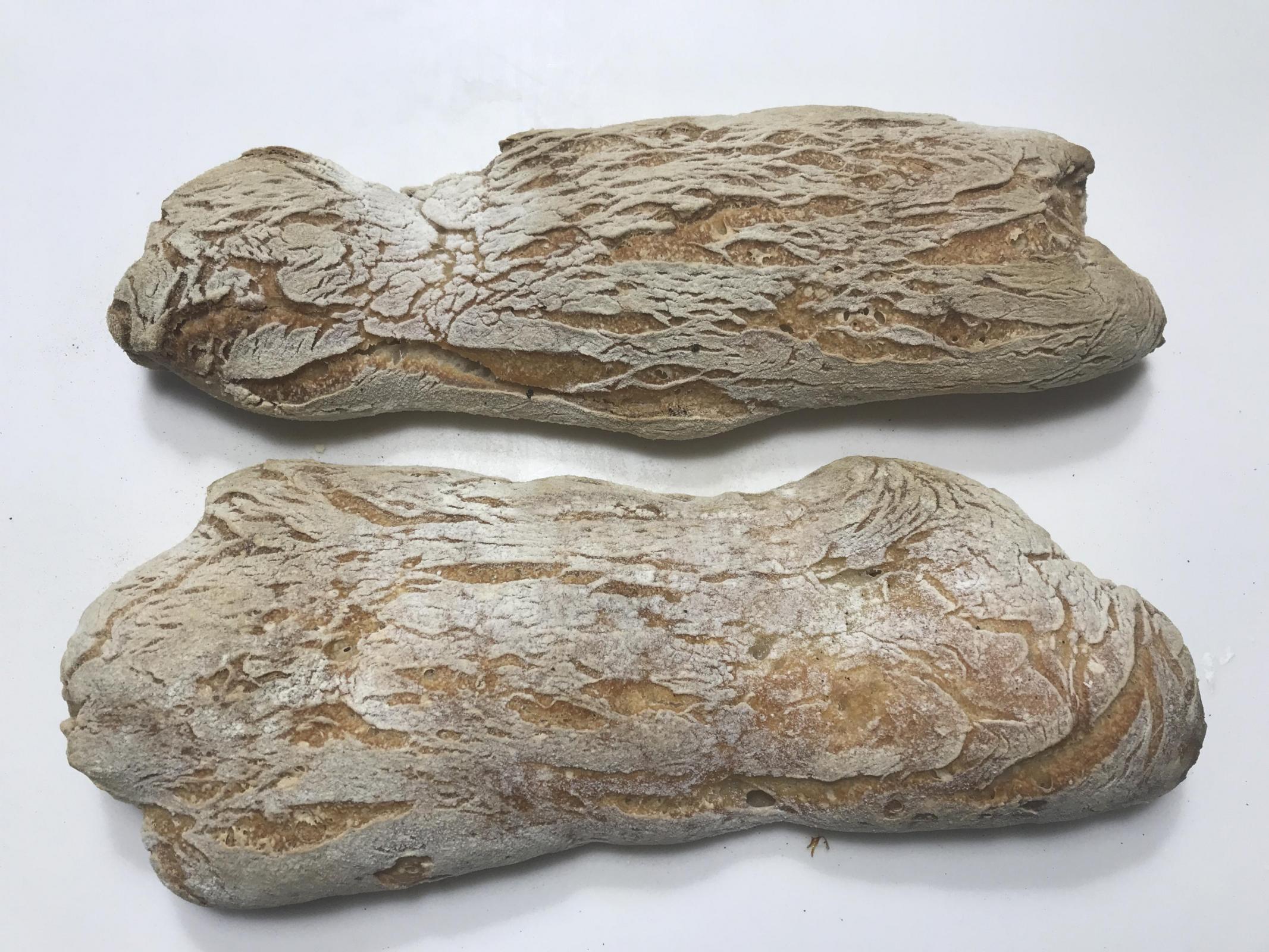
BUT, the bread tasted outstanding, although the texture was horrible.
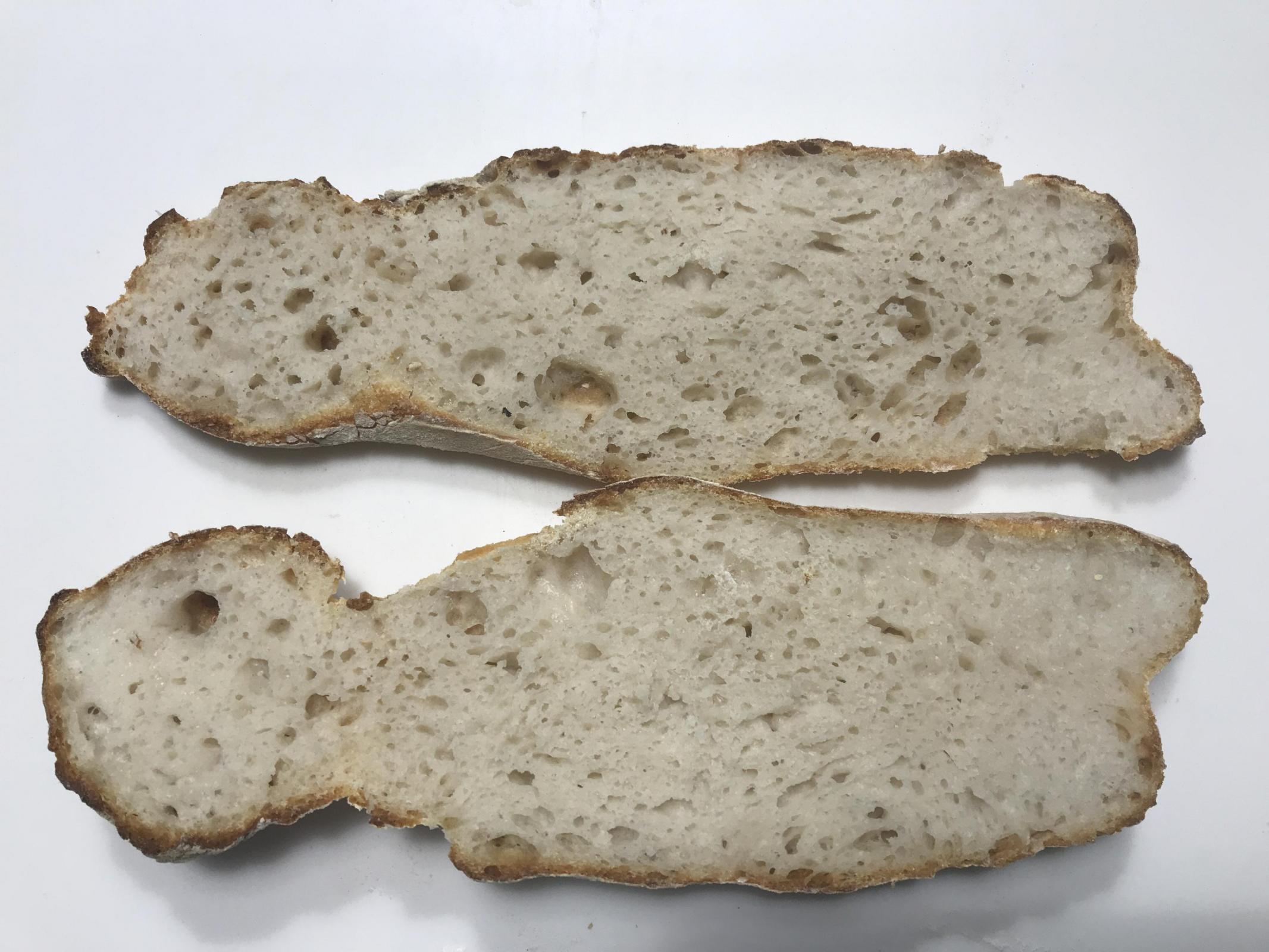
I am pretty confident that the reason a long fermented dough using a sourdough culture, made with 85% Pre-Fermented Flour should not have the gluten developed during the biga mix is to protect the gluten form irreparable damage.
Maybe this experience will help others.
Update - the flavor of Bake #4 is special. It is probably the best tasting Ciabatta I’ve ever baked. I keep going back for more.
Dan’s Bake 6 - I baked Michael's "Ciabatta con pasta madre biga". With the exception of the hydration, the formula was followed precisely. I chickened out on the water and reduced it by 25g. I imagined the 15g of olive oil would make things too wet for me. I was wrong, next time I'll use all of the water. The dough was a joy to work with. Following Mike's belief of thoroughly developing the gluten in the mixer worked super well. The dough was easily folded, like the video Michael shared. This is the first time I have seen a Ciabatta (LM biga) formula using sourdough for the biga. The Lievito Madre was very strong in yeast and it was washed prior to the final build. The flavor was pleasant and clean, but I hope to increase the complexity in future bakes. The texture of the crust (thin) and crumb (super light & airy) was excellent. The stars aligned for this bake...
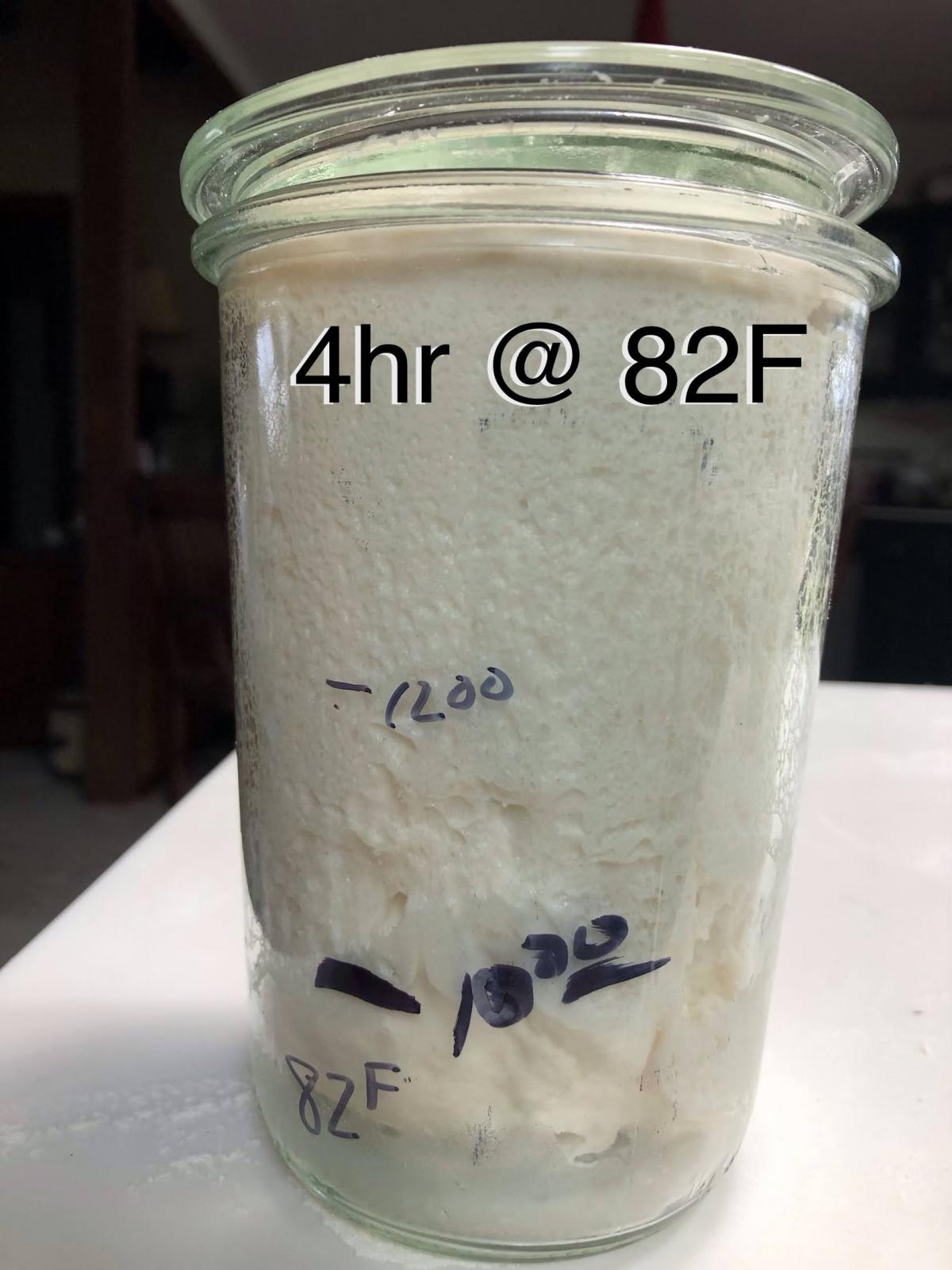
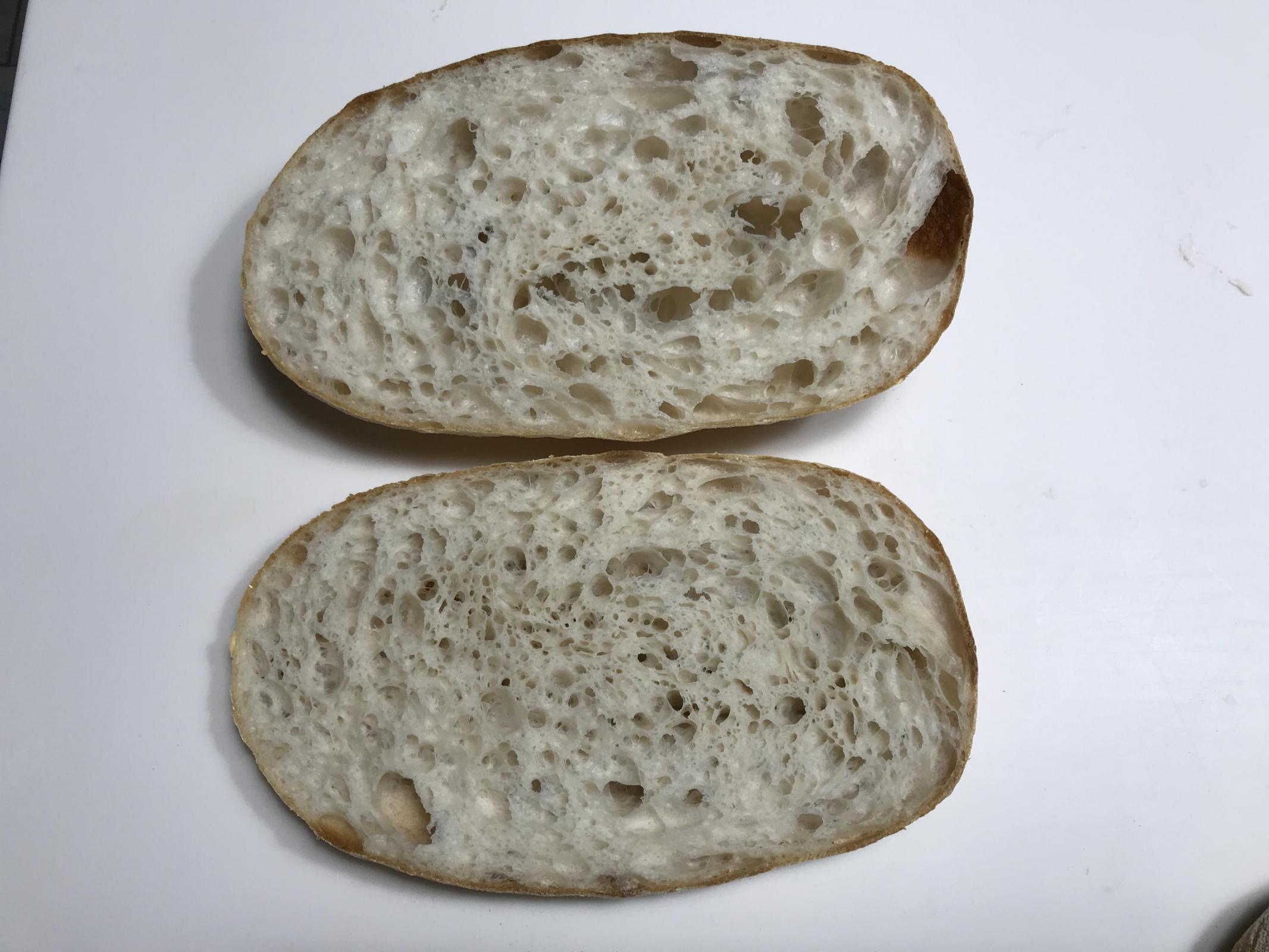
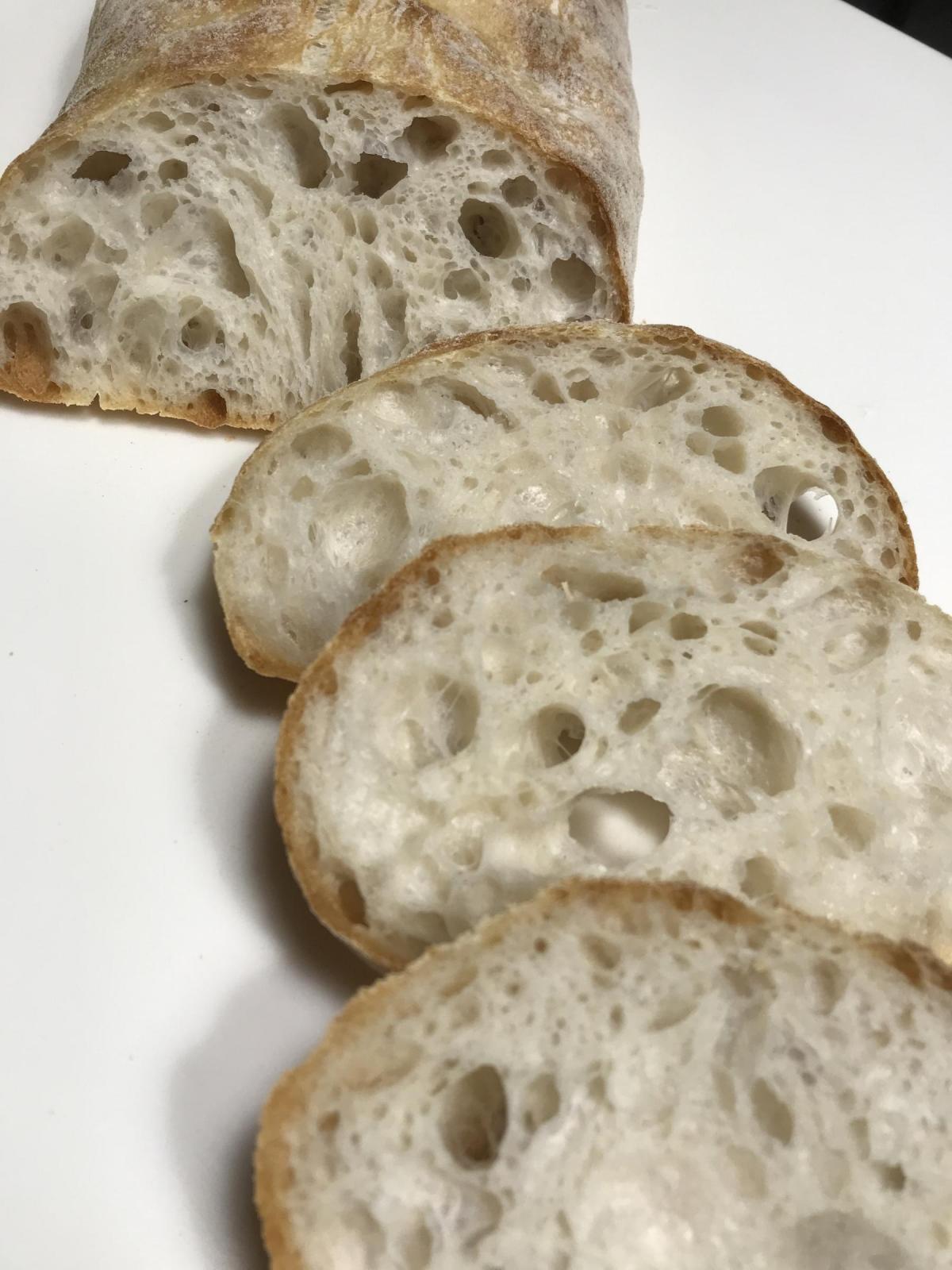
I hope someone can tell me why the dough doesn’t seal well. See Below. Is it possible that it is folded to aggressively or too much. I noticed how well Michael’s dough sealed after shaping. Mine doesn’t.
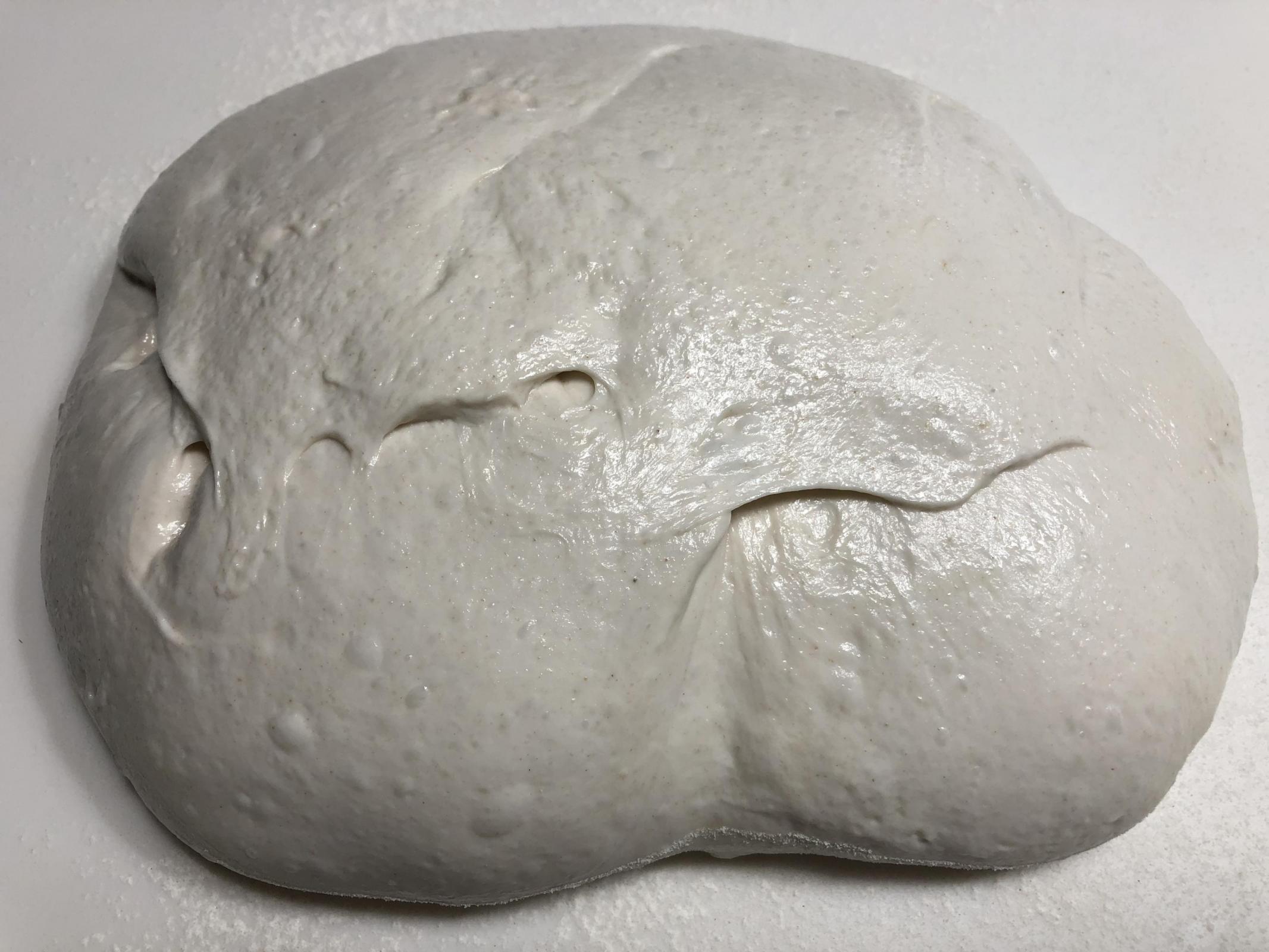
I am starting to get a grasp on the Lievito Madre process am excited to learn this technique. The leavening ability of this culture is phenomenal. The image below shows my baby wrapped up in his blanket ready to go to sleep. He’s a cutie...
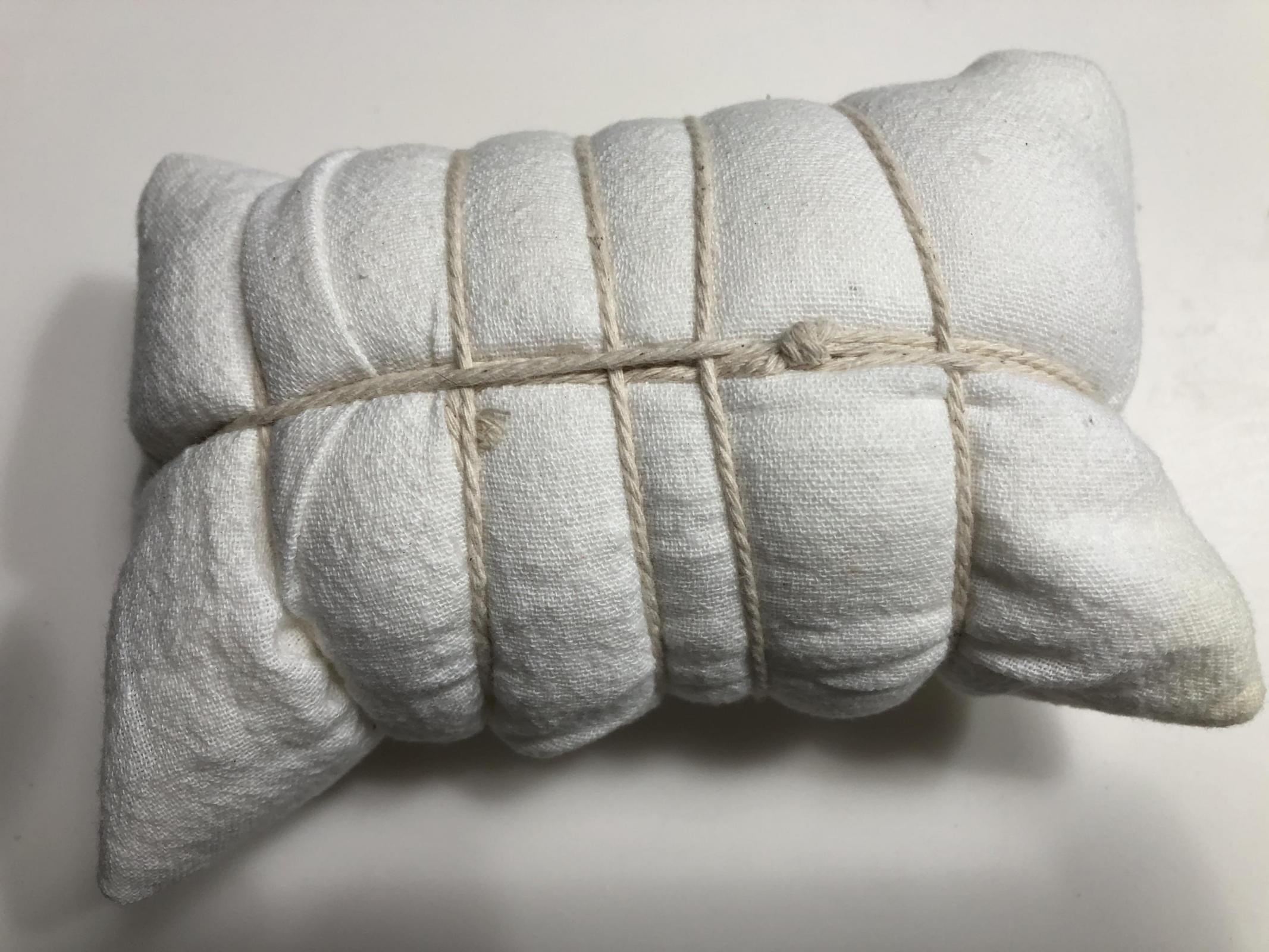
Another Biga made from the LM is in cool retard now getting ready for tomorrow’s adventure.
Dan’s Bake 7 - Once again I baked Michael's "Ciabatta con pasta madre biga". This time I went with the full hydration and it handled like a dream. I attribute that to the oil and also the well developed gluten. Folding on the bench (like Michael’s video) was a rewarding and pleasant experience. It also seems the Caputo 00 Americana is an ideal flour for the task. I have yet to taste the bread, but my neighbor has had over a hundred loaves on my bread and she messaged me that, “this is the best bread yet”. Taste Update - The bread sat on the counter (uncut) overnight. Once again the crumb was soft, springy, and not hint of dryness. The crust was only slightly crisp and had a very minimal leathery chew. The flavor is best described as clean with the slightest hint of sour. So much so, you have to look for it or it might be missed. As a perfectionist, I am rare satisfied, but this bread checks almost all of the boxes. I recommend that any of the more adventurous bakers, build a Lieveto Madre and see for yourself. IMO, it is worth the effort.
My Ciabatta shaping skills need serious improvement, but I’m pleased with all other aspects. The highlights of my baking improvements gained from this CB are learning the Lieveto Madre and the SD Biga.
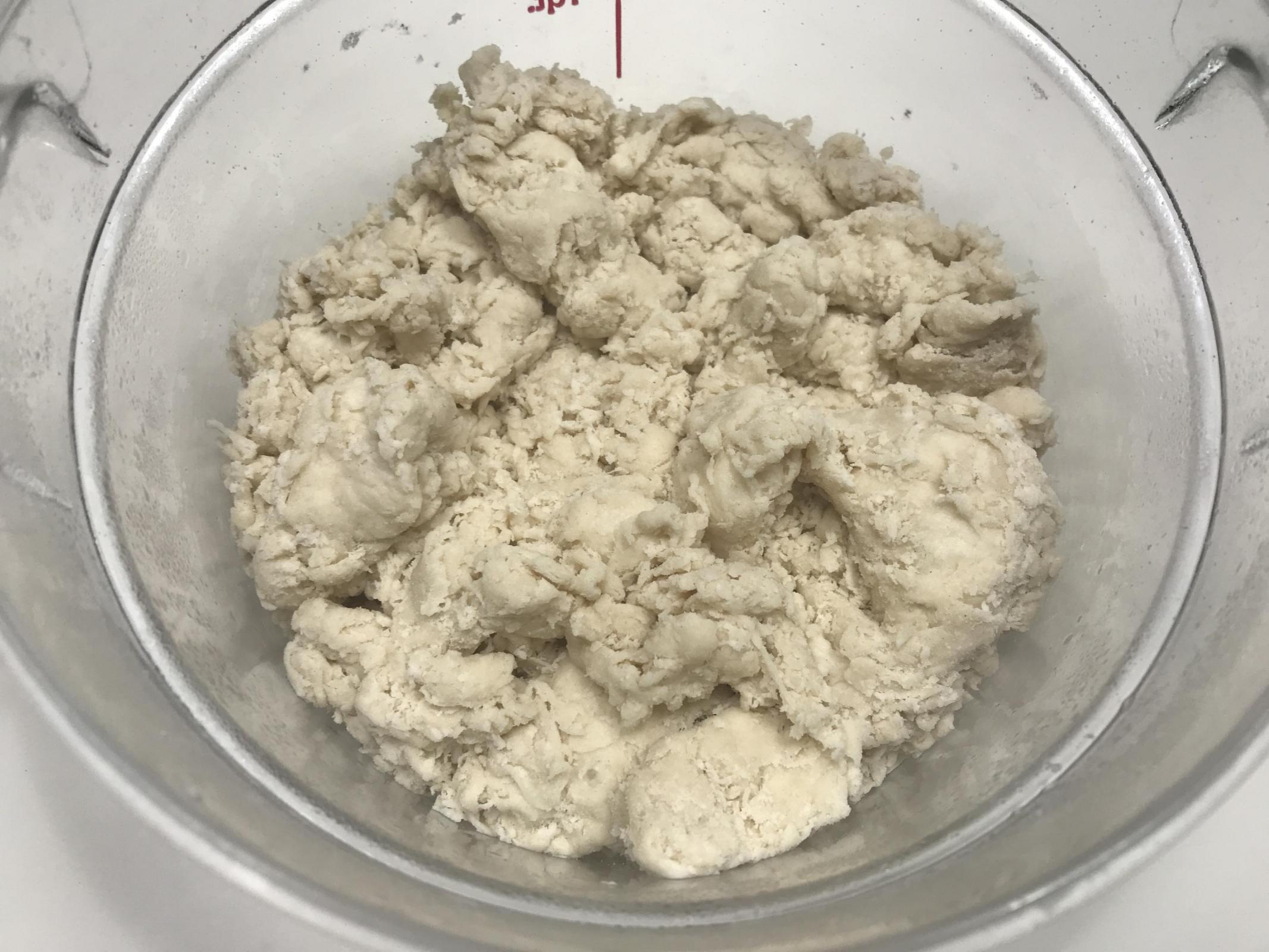
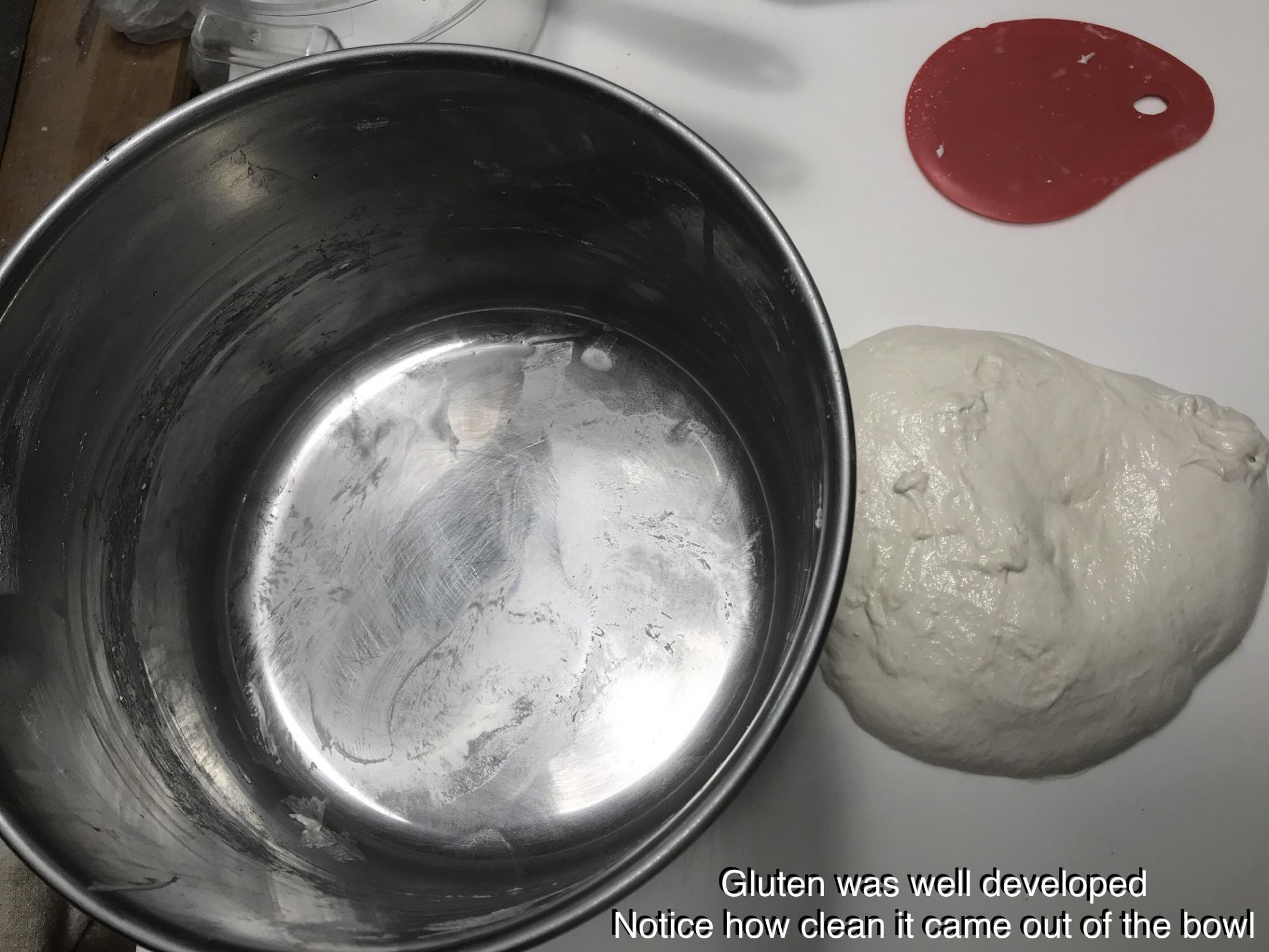
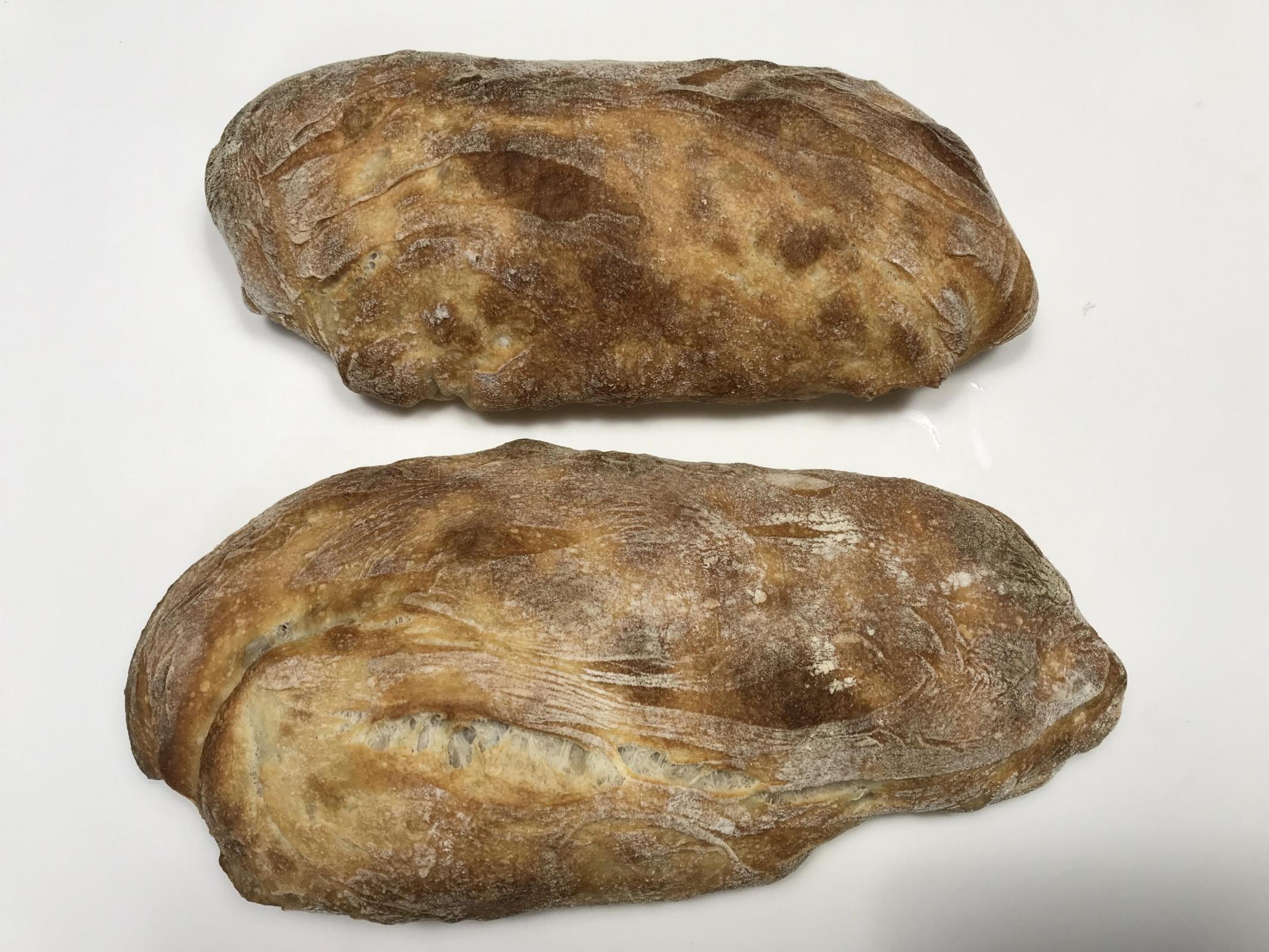
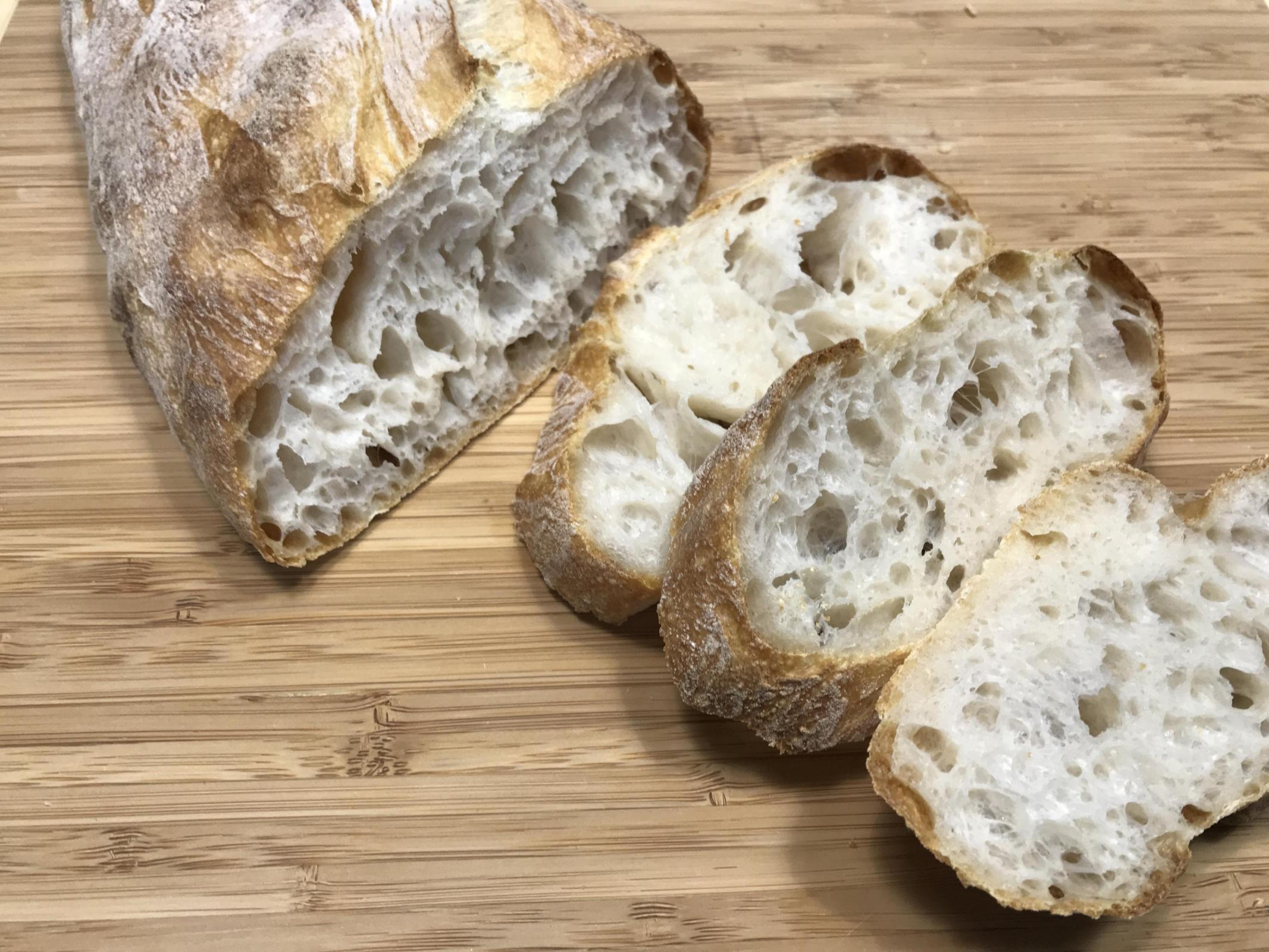
The bread has a thin crust and soft texture. There is practically no resistance to the bit and the crumb is moist. It works well for sandwiches and does well with a light toasting.
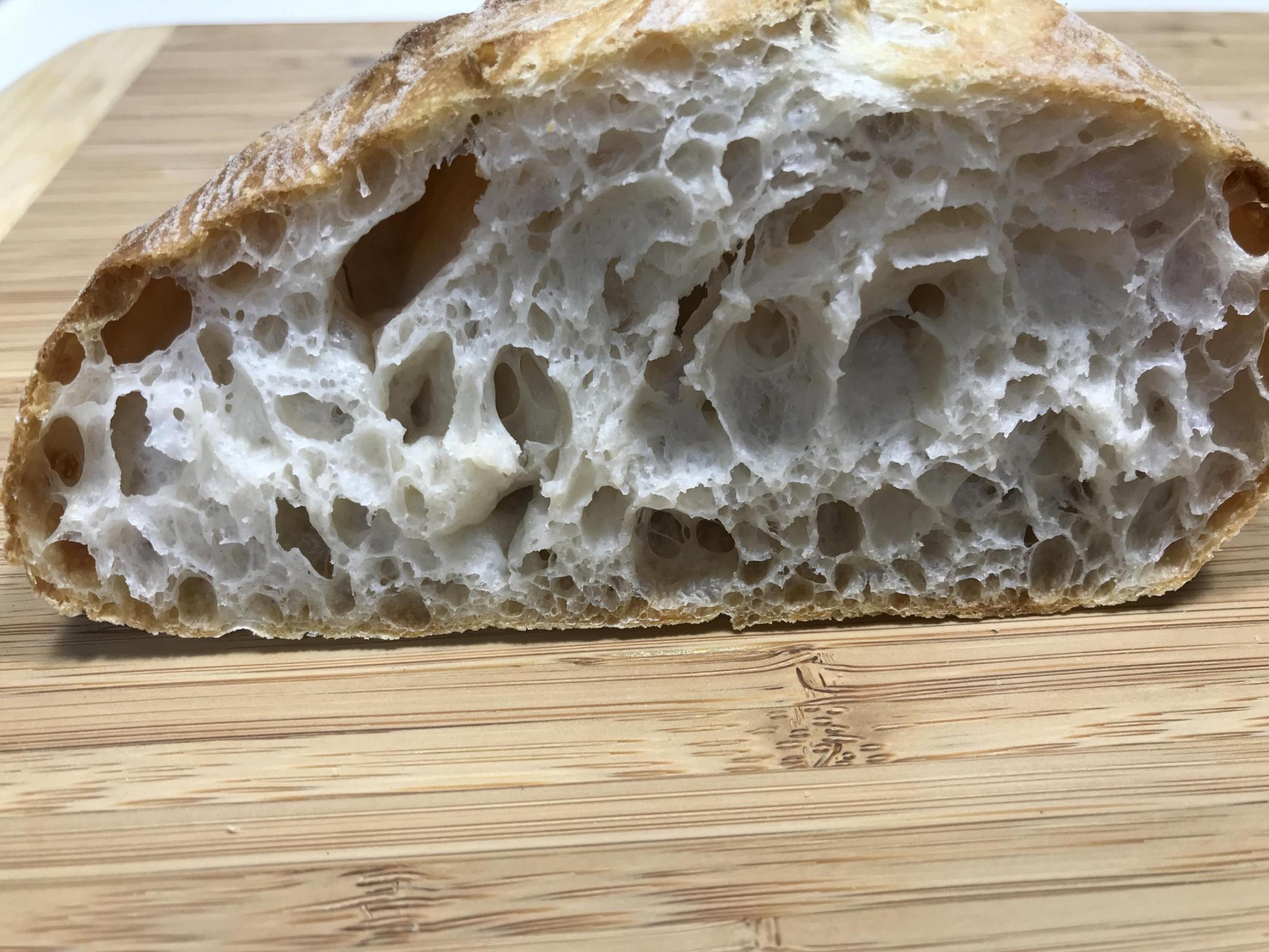
Dan’s Bake 8 - A good friend had a saying, “sometime chicken, sometime feathers”. Today I got feathers :-)
You probably guessed it, I baked Michael's "Ciabatta con pasta madre biga" AGAIN. Small changes have a way of making large changes. I THINK the problem starter when the decision was made to finished up the 16 hr biga ferment for the last 2 hr at 82F. The first 14 hr it rested at ~62F. I had hoped to bring a little more acidity to the bread, but the additional acid may have harmed the gluten. I really don’t know what else to think. I knew something was not right during the machine kneading. The dough refused to come together as it had in the past. I began to question if maybe I had mis-measured the water or something similar. After considerable mixing the dough remained slack. I ultimately added 20% more flour, but the dough never did look like the past bakes of the same formula. I was accustomed to super supple and extremely extensible dough. While in the mixer the dough never did completely smooth out. This bake will be valuable to me if the troubleshooting assumptions are correct.
The bread has a more acidic flavor, which was nice. And the sandwiches are killer. If you happen to have Olive Salad in your cabinet, give it a try. It is made for Ciabatta. Will if you read this, make sure you give it a go. You are guaranteed to love it.
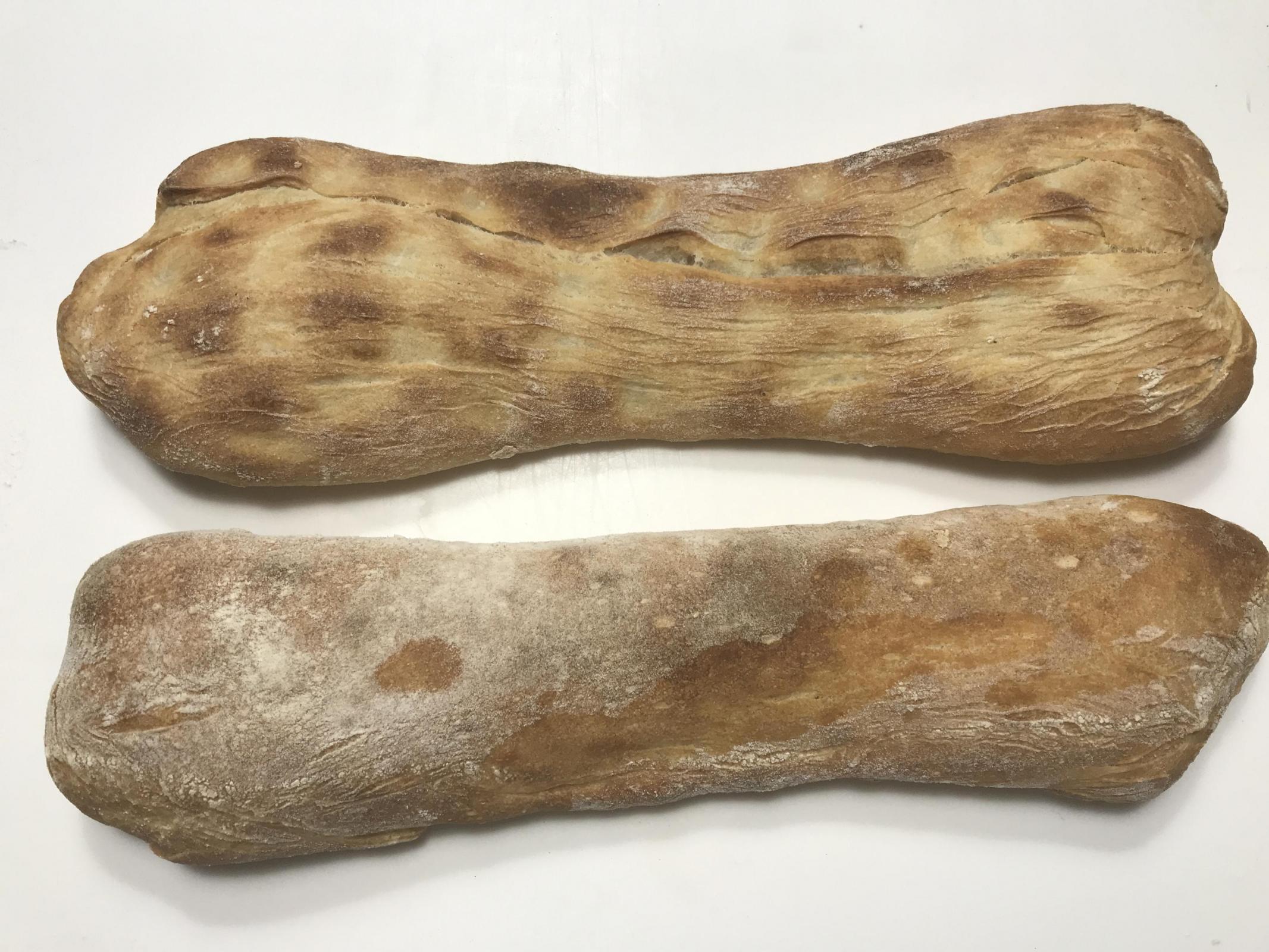
Because of the weak gluten, the dough was unable to hold enough gas. The lack of spring and the crumb reflects that.
Dan’s Bake #9
You guessed it, Michael's "Ciabatta con pasta madre biga". The diastatic malt was upped slight to 1%, hoping to produce the gorgeous color of Lance’s bread. But not to be, color remained the same. Next time maybe milk or sugar.
A flour test -
Caputo Americana is a great flour for Ciabatta, but in my area it is expensive. Since I can get King Arthur Sir Lancelot (high protein) for 1/4 of the price, it was used for this bake. Good news, it handles and bakes up about the same as Caputo Americana! Great gluten. Not so good news, the flavor and crust texture doesn’t compete with Americana. Speaking as a flour snob, “flour makes a HUGE difference”.
Shaping is getting better, but reducing the size of the holes in the crumb is not gaining traction.
In an effort to reduce the size of the holes and at the same time temper the oven spring in order to lower the profile (wanted to slice bread horizontally for sandwiches), the dough was aggressively finger docked on both sides. My fingers pressed into the dough until they touched the bottom of the cabinet. Many dimples were made on each side. But it seems that Lievito Madre is such a powerful leavening agent that it rose anyway, leaving almost no signs of the dimples and produced super open crumb.
I am very pleased with the Ciabatta that has come out of my oven since Michaels formula (with LM) was used.
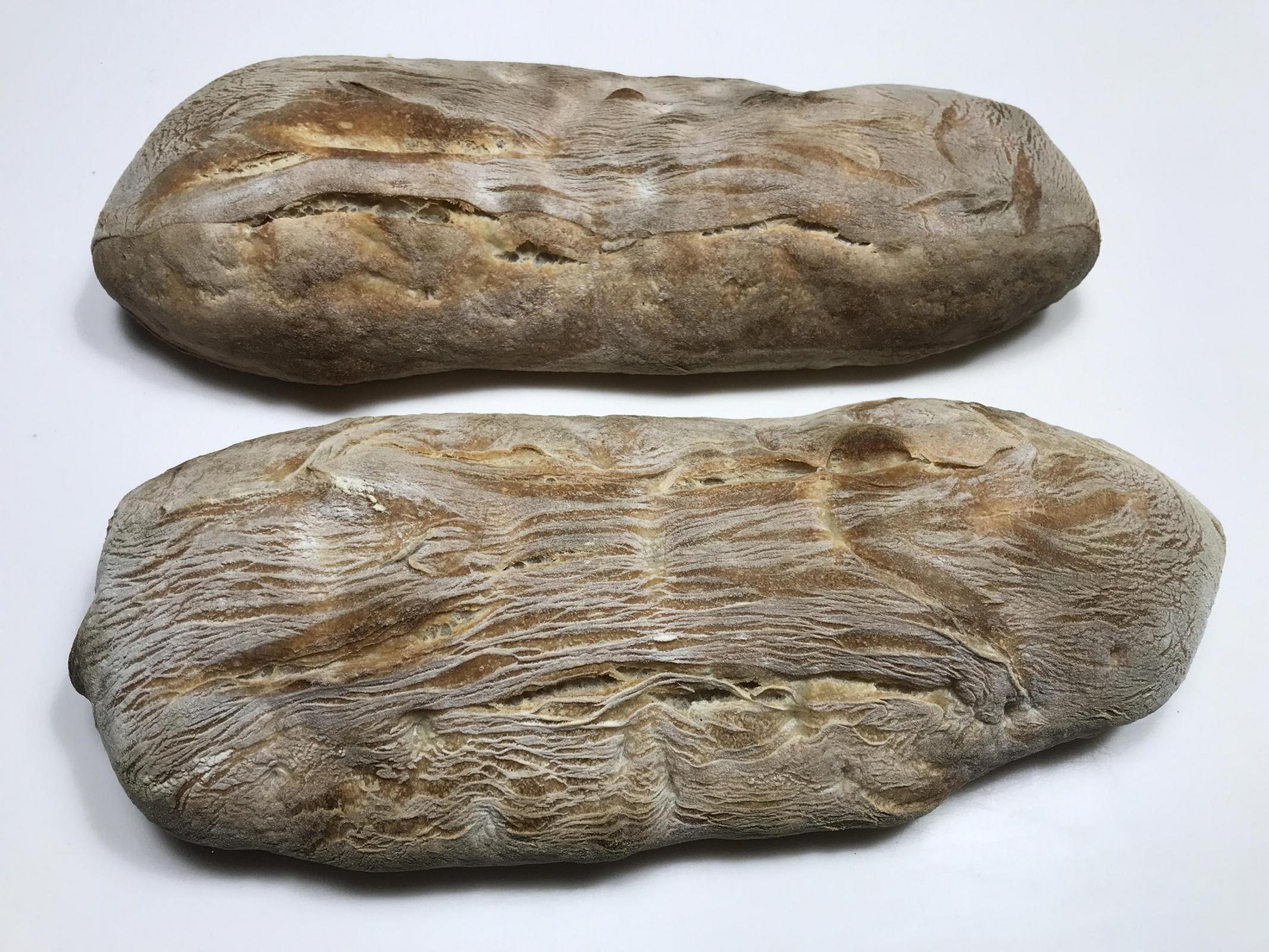
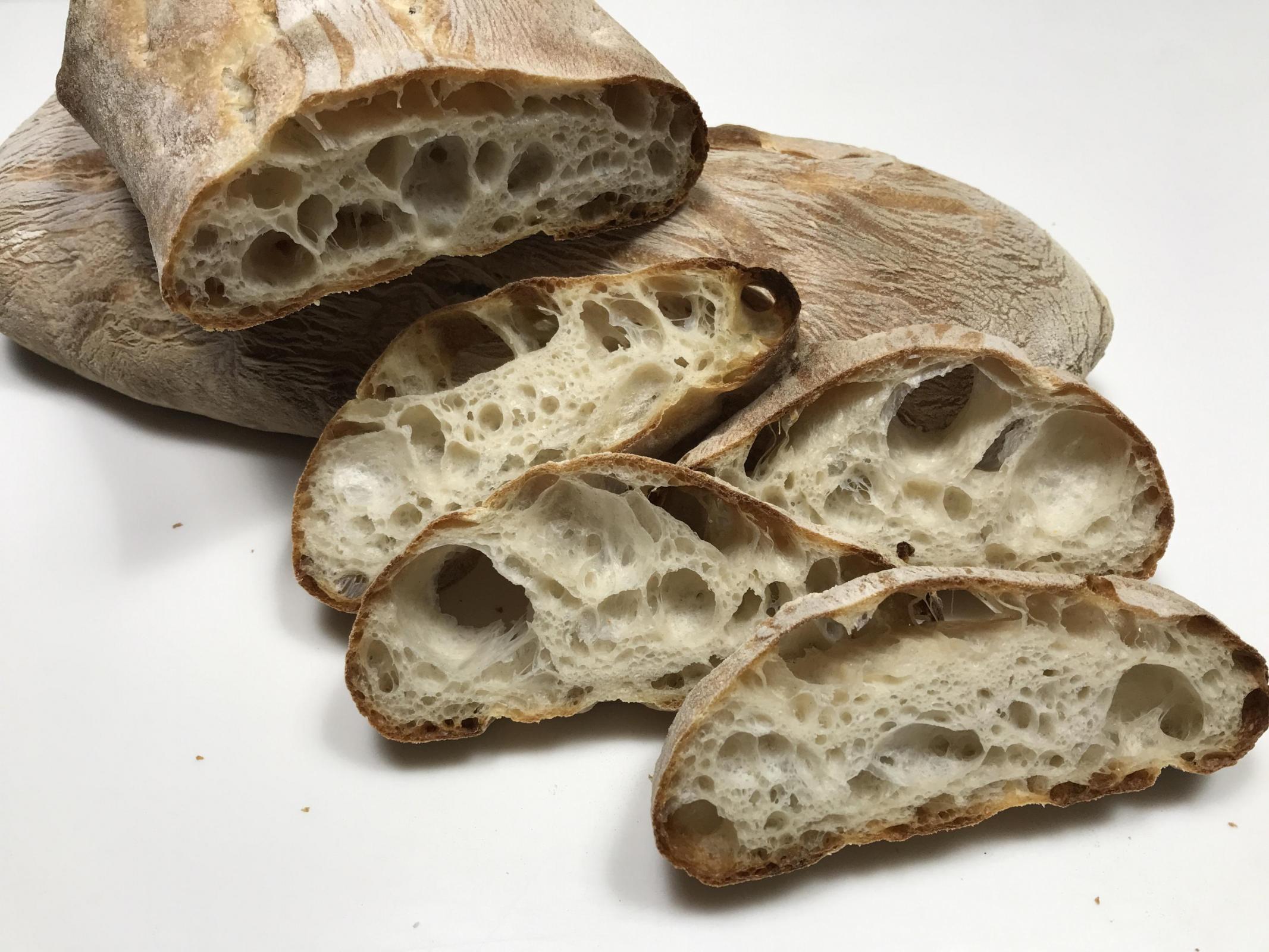
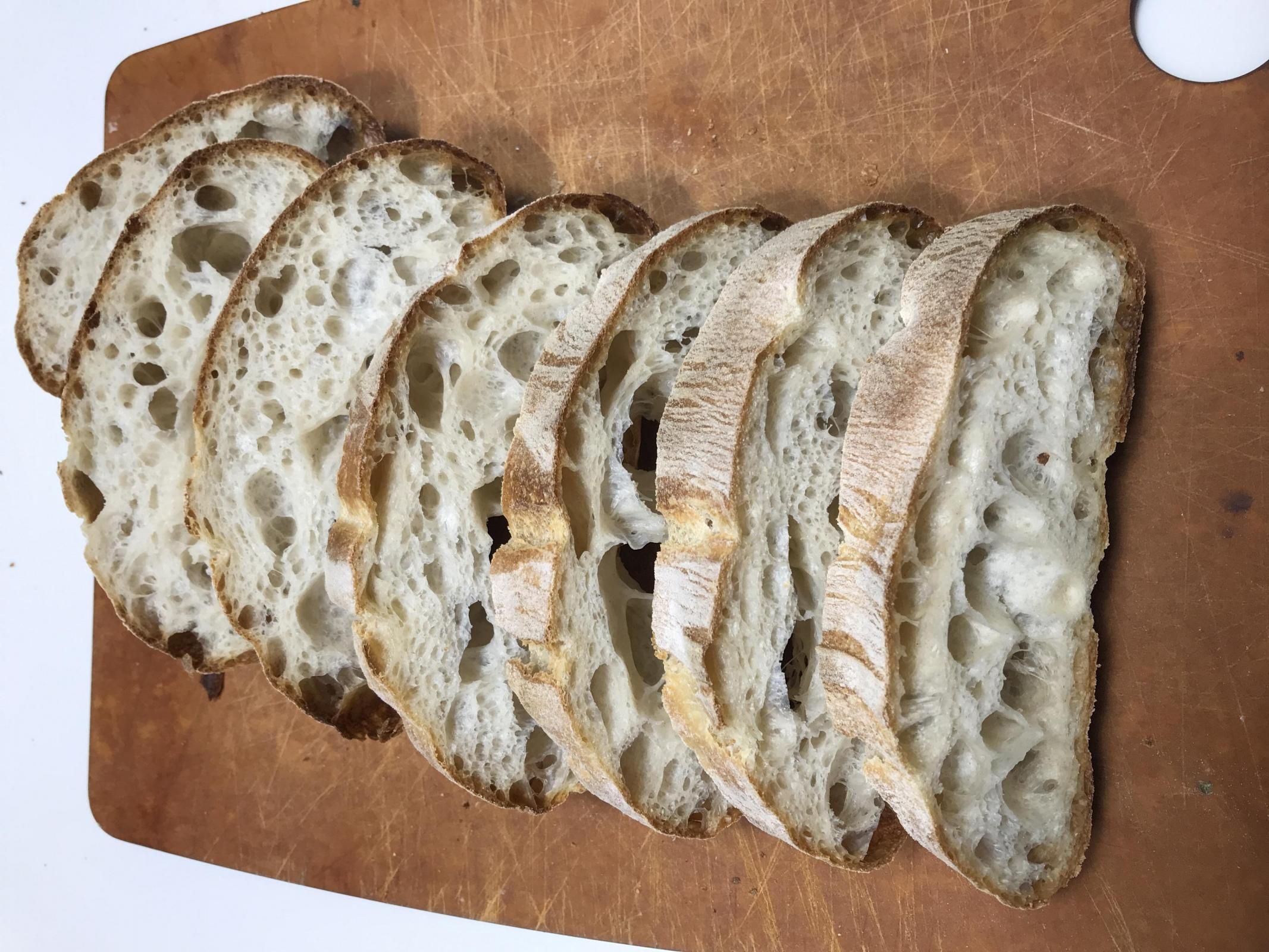
I have joined the ranks of Doc and Micheal when it comes to gluten development for Ciabatta. A Dedicated post on the subject can be SEEN HERE.
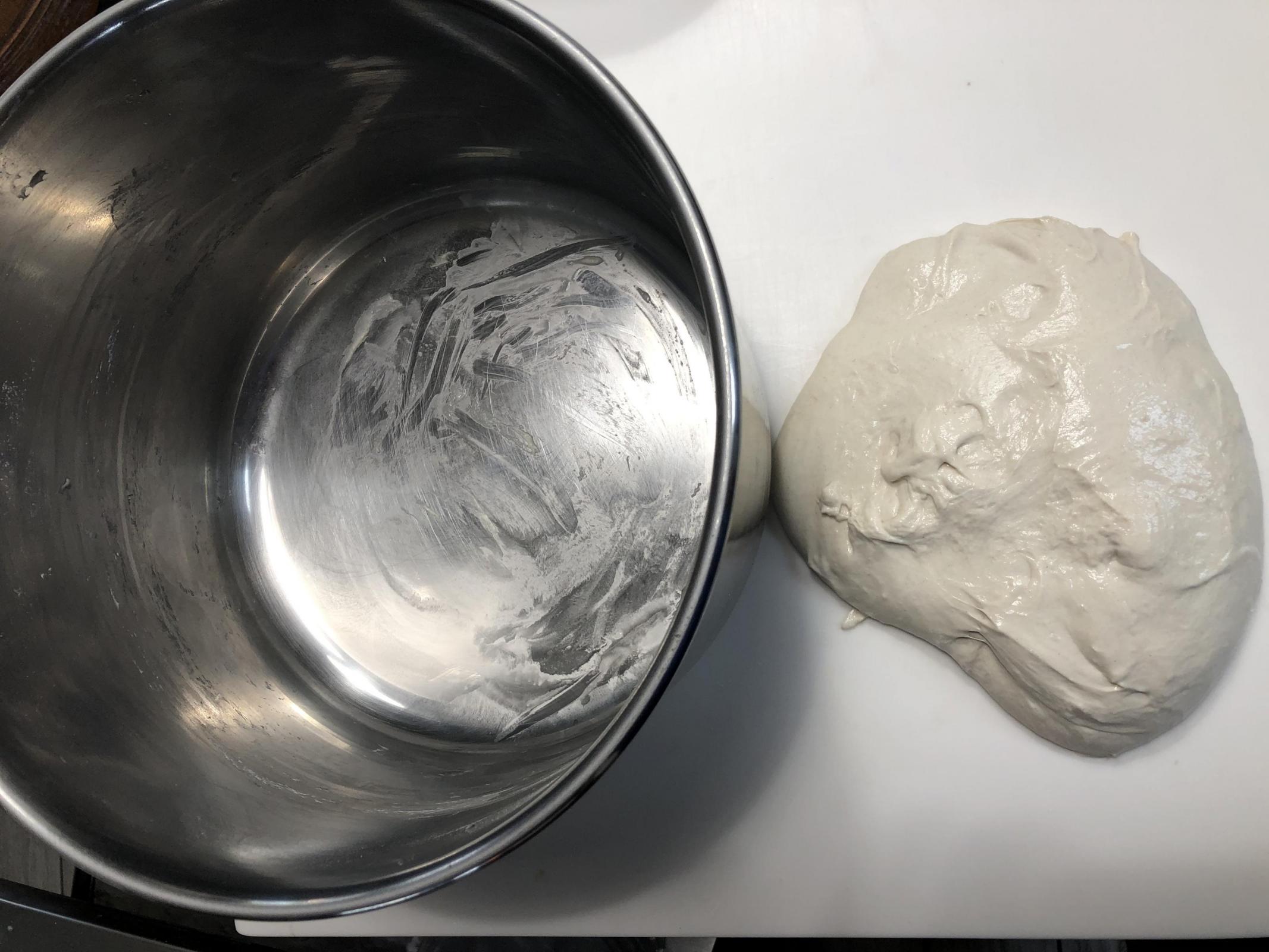
I’ve read where Michael sad that he didn’t stress about over-proofing when using LM. I am beginning to understand. This dough was BF to ~125%. The total rise upon completion of shaping was a whopping 280%, according to the aliquot jar.
